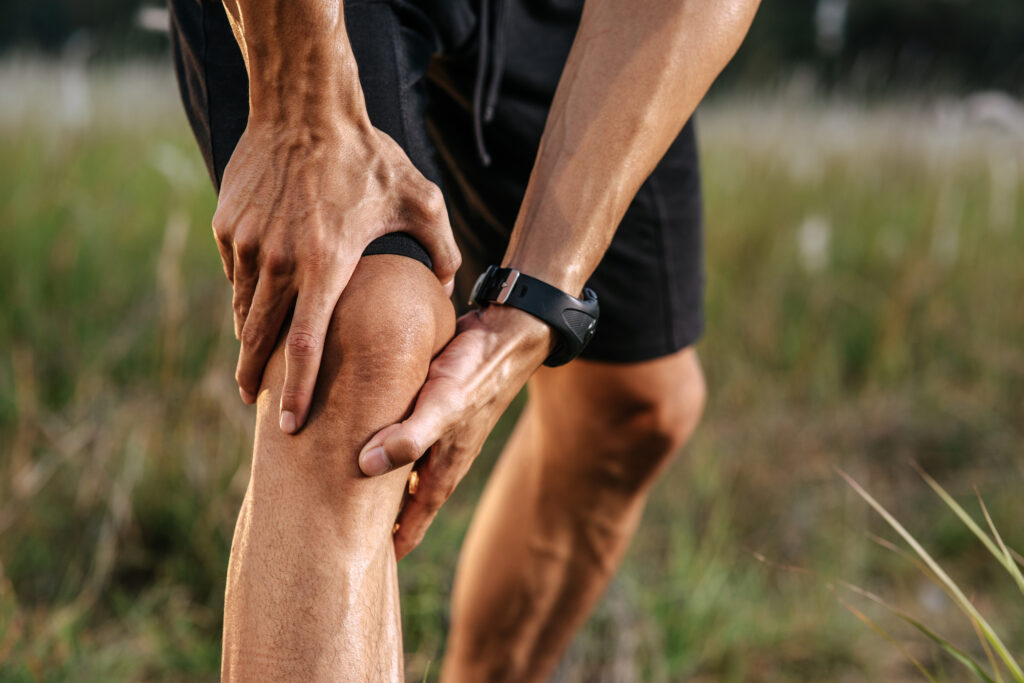When you think about maximizing your athletic performance, you might focus on traditional training methods, but alternative techniques could elevate your game in unexpected ways. Incorporating mental training, tailored nutrition, and innovative recovery strategies can provide the edge you've been seeking. Have you considered how mindfulness or functional movement training might transform your routine? These elements not only enhance your physical capabilities but also influence your mental resilience. The real question is, which techniques could integrate seamlessly into your regimen for the best results?
Mindfulness and Mental Training
Mindfulness and mental training play an essential role in enhancing your athletic performance. By incorporating these practices into your routine, you can sharpen your focus, reduce anxiety, and improve your overall mindset. When you're fully present in the moment, you're better equipped to handle the pressures of competition and training.
One effective technique is visualization. Picture yourself executing your skills flawlessly, whether it's making that perfect shot or crossing the finish line strong. This mental rehearsal helps your brain create pathways that translate to real-world performance. You're not just daydreaming; you're actively programming your mind for success.
Another powerful practice is breath control. When you feel tense or overwhelmed, taking a few deep breaths can ground you, bringing clarity and focus. This simple act can help calm your nerves before a big event, allowing you to channel your energy productively.
Moreover, setting specific mental goals can enhance your training. Rather than just aiming for physical improvements, focus on building resilience and maintaining a positive attitude. Track your progress in these areas, celebrating small victories along the way.
Finally, incorporate mindfulness meditation into your routine. Just a few minutes each day can help you cultivate awareness and presence, sharpening your mental acuity.
Nutrition for Peak Performance
To achieve peak athletic performance, nutrition is essential—often acting as the foundation for your success. The food you consume fuels your body, impacting your energy levels, endurance, and recovery. To optimize your performance, focus on a balanced diet that includes the right mix of carbohydrates, proteins, and fats.
Carbohydrates are your primary energy source, especially during intense workouts. Incorporate complex carbs like whole grains, fruits, and vegetables into your meals. These not only provide energy but also deliver important vitamins and minerals.
Timing matters too—fuel up with carbs before training and replenish them after to restore glycogen levels.
Protein plays a significant role in muscle repair and growth. Aim for lean sources like chicken, fish, beans, and low-fat dairy. Consuming protein shortly after your workouts can enhance recovery, helping you bounce back faster for your next session.
Don't forget healthy fats, which are essential for hormone production and overall health. Opt for sources like avocados, nuts, and olive oil, but consume them in moderation.
Hydration is equally important. Dehydration can severely hinder your performance, so drink plenty of water throughout the day and consider electrolyte-rich drinks during extended workouts.
Lastly, listen to your body. Everyone's nutritional needs are different, so adjust your intake based on how you feel and your training demands.
Innovative Recovery Techniques
After putting in the hard work to fuel your body with the right nutrition, it's time to focus on recovery techniques that can elevate your athletic performance even further. Innovative recovery techniques can help you bounce back quicker, reduce the risk of injury, and enhance your overall performance.
One such method is cryotherapy, where you expose your body to extremely cold temperatures for a short period. This can reduce inflammation and muscle soreness, allowing you to train harder and recover faster.
Alternatively, consider using infrared saunas. They penetrate deeper into your muscles, promoting relaxation and detoxification while improving circulation.
Another effective recovery technique is active recovery, which involves low-intensity exercise post-training. Gentle activities like walking or cycling can help reduce muscle stiffness, improve blood flow, and speed up the recovery process.
Don't overlook the benefits of foam rolling, either. This self-myofascial release technique can break down knots in your muscles, improving flexibility and reducing soreness.
Lastly, mindfulness practices such as yoga or meditation can aid in mental recovery, helping you manage stress and improve concentration during training.
Incorporating these techniques into your routine can greatly enhance your recovery process. Remember, your body needs time to heal and adapt after intense workouts, so don't skimp on recovery. By prioritizing these innovative techniques, you'll set yourself up for success in your athletic endeavors.
Functional Movement Training
Functional movement training is essential for athletes looking to improve their performance and reduce the risk of injury. By focusing on movements that mimic everyday activities, you can enhance your strength, flexibility, and coordination. This type of training prepares your body for the stresses of competition and helps you move more efficiently.
Here are three key benefits of incorporating functional movement training into your routine:
- Improved Balance and Stability: Functional exercises challenge your body in multiple planes of motion, enhancing your ability to maintain balance and stability during dynamic movements.
- Enhanced Muscle Activation: By using compound movements that engage multiple muscle groups simultaneously, you'll activate more muscles, leading to better overall strength and power.
- Injury Prevention: Training your body to perform movements correctly can help reduce the likelihood of injuries. You'll learn to identify and correct imbalances or weaknesses before they become a problem.
To get started, focus on exercises like squats, lunges, and push-ups that engage your core and promote functional movement patterns.
Incorporating kettlebells, resistance bands, or stability balls can add variety and challenge to your workout.
Breathing Exercises for Endurance
Breath control is a crucial aspect of enhancing endurance, allowing athletes to maximize their performance during intense physical activity. By incorporating specific breathing exercises into your routine, you can improve oxygen delivery to your muscles, boost stamina, and reduce fatigue.
One effective technique is diaphragmatic breathing. To practice this, sit or lie down comfortably. Place one hand on your chest and the other on your abdomen. Breathe in deeply through your nose, ensuring your diaphragm inflates your abdomen rather than your chest. Exhale slowly through your mouth. This method engages your diaphragm more effectively, promoting better oxygen exchange.
Another useful exercise is the box breathing technique. Inhale through your nose for a count of four, hold your breath for four seconds, exhale through your mouth for four seconds, and then hold your breath for another four seconds. This rhythmic pattern not only calms your mind but also increases lung capacity and endurance.
You might also consider practicing controlled breathing during your workouts. For example, try to synchronize your breath with your movements—inhale during easier phases and exhale during exertion. This strategy can enhance your performance by ensuring your muscles receive the oxygen they need at critical moments.
Incorporating these breathing exercises into your training regimen can lead to significant improvements in your endurance. Consistency is key, so make it a habit to practice daily.
As you develop your breath control, you'll likely notice enhanced performance and reduced fatigue during your workouts.
Cryotherapy and Cold Therapy
Cryotherapy and cold therapy are increasingly popular methods for enhancing athletic performance and recovery. These techniques involve exposing your body to extremely low temperatures, which can lead to a range of physical benefits.
Whether you're a seasoned athlete or just starting, incorporating these therapies can be a game-changer.
One of the main advantages of cryotherapy is its ability to reduce inflammation. After a tough workout or competition, your muscles can become sore and swollen. By exposing them to cold, you can help minimize this effect and speed up recovery.
You'll also experience a boost in circulation, as your body works to warm itself back up after the cold exposure.
Here are a few benefits you can expect from cryotherapy and cold therapy:
- Reduced muscle soreness: Cold therapy can help alleviate the pain and discomfort that follows intense physical activity.
- Improved recovery time: By incorporating these techniques, you can get back to training sooner and with less downtime.
- Enhanced performance levels: Regular use can lead to increased endurance and strength, allowing you to push your limits.
To reap the benefits, consider trying localized cold packs, ice baths, or even whole-body cryotherapy sessions.
Just remember to listen to your body and consult a professional if you're unsure about using these techniques.
With the right approach, cryotherapy and cold therapy can become essential tools in your athletic performance toolkit.
Alternative Therapies for Pain Relief
When it comes to recovering from pain, exploring alternative therapies can be a game-changer for you.
Consider how acupuncture, various massage techniques, and even the benefits of cryotherapy can enhance your recovery process.
These methods not only relieve pain but also promote overall athletic performance.
Acupuncture for Recovery
Many athletes are turning to acupuncture as a powerful tool for recovery and pain relief. This ancient practice involves inserting thin needles into specific points on the body, helping to promote healing and reduce inflammation.
If you're looking to enhance your recovery process, acupuncture might just be the solution you need.
Here are a few benefits of incorporating acupuncture into your routine:
- Pain Relief: Acupuncture can effectively alleviate chronic pain, helping you bounce back faster after intense workouts.
- Improved Circulation: The treatment increases blood flow, which aids in delivering nutrients to muscles and speeding up the recovery process.
- Stress Reduction: It promotes relaxation, reducing tension and anxiety, allowing you to focus better on your training.
Massage Techniques Explained
Massage therapy is an invaluable tool for athletes seeking pain relief and enhanced performance. It helps alleviate muscle tension, improves circulation, and promotes relaxation, all of which can lead to better overall athletic function.
There are several massage techniques you can explore to maximize your benefits.
Swedish massage is a great starting point. It uses long strokes, kneading, and circular movements to help relax your muscles and increase blood flow.
If you're dealing with specific soreness, deep tissue massage targets deeper layers of muscle and connective tissue, helping to release chronic tension.
Sports massage is tailored specifically for athletes like you. It focuses on areas of the body that are overused and stressed from repetitive movements, making it ideal before or after events.
Trigger point therapy can also be beneficial; it involves applying pressure to specific points within tight muscles to relieve pain and restore mobility.
Integrating these techniques into your routine can greatly improve your recovery process, enhance your flexibility, and reduce your risk of injury.
Regular massage therapy can be a game changer for your performance and well-being.
Cryotherapy Benefits Overview
Cryotherapy offers a unique approach to pain relief and recovery that you might find beneficial as an athlete. This technique involves exposing your body to extremely cold temperatures for a short duration, triggering a range of physiological responses that can aid in your recovery process.
Many athletes have turned to cryotherapy to enhance their performance and alleviate discomfort.
Here are some key benefits you might experience with cryotherapy:
- Reduced Inflammation: The cold exposure helps decrease inflammation, which can lead to quicker recovery from injuries and intense workouts.
- Pain Relief: Cryotherapy can numb pain receptors, providing immediate relief from muscle soreness and joint pain.
- Improved Recovery Time: By stimulating blood flow and reducing muscle damage, you'll likely notice a shorter recovery time between workouts or competitions.
Incorporating cryotherapy into your routine could give you that extra edge you need.
As with any treatment, make sure to consult with a healthcare professional to determine if it's right for you.
Embrace this innovative technique and see how it can help you maximize your athletic performance!
Visualizations and Mental Imagery
Visualization and mental imagery play an essential role in maximizing athletic performance. When you visualize your success, you're not just dreaming; you're programming your mind and body for achievement. By creating vivid mental pictures of your goals and the steps to reach them, you set the stage for real-life execution.
Imagine yourself executing a perfect sprint, feeling the rhythm of your breath, and the strength in your legs. As you picture every detail, from your starting position to the finish line, you're training your brain to recognize the pathways of success. This mental rehearsal enhances your physical performance by familiarizing you with the sensations and actions involved.
To get started, set aside a few minutes each day for visualization. Find a quiet space, close your eyes, and focus on your breathing. Allow yourself to relax and immerse in the experience. Picture yourself overcoming challenges, whether it's finishing a tough race or nailing a complex move in your sport. The more specific and detailed your imagery, the more effective it will be.
You might also consider using mental imagery techniques before competitions. Picture yourself in high-pressure situations, executing flawlessly under stress. These techniques not only build confidence but also help manage anxiety.
Wearable Technology Enhancements
Wearable technology has taken athletic performance to the next level, offering real-time data and insights that can help you fine-tune your training. By utilizing these devices, you can track your progress, monitor your health, and optimize your workouts, all while staying motivated to reach your goals.
These enhancements are invaluable for athletes at any level, whether you're a weekend warrior or a competitive professional.
Here are three key benefits of wearable technology:
- Performance Metrics: You can measure your heart rate, speed, distance, and calories burned, allowing you to understand your body's response to various training stimuli.
- Recovery Monitoring: Many wearables track your sleep patterns and stress levels, helping you identify when it's time to push harder and when you need to take it easy to avoid injury.
- Goal Setting and Progress Tracking: With the ability to set specific goals and receive real-time feedback, you can stay accountable and motivated.
Integrating wearable technology into your training routine can provide you with a competitive edge.
You'll gain insights that enable you to make informed decisions about your workouts and recovery strategies. As you harness the power of these tools, you'll not only enhance your performance but also cultivate a deeper understanding of your body's capabilities.
Embrace technology, and watch how it transforms your athletic journey!
Conclusion
By integrating these alternative techniques into your training regimen, you can greatly enhance your athletic performance. Mindfulness, proper nutrition, and innovative recovery methods will help you stay focused and energized. Don't forget the power of functional movement training and breathing exercises to boost your endurance. Embrace wearable technology for insights and track your progress. With these strategies in place, you'll not only improve your performance but also enjoy the journey toward achieving your athletic goals.



